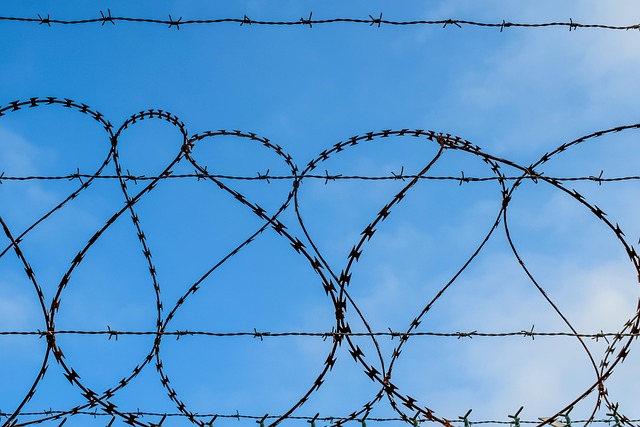Emerging technologies are revolutionizing Driving Under the Influence (DUI) laws, addressing traditional challenges and enhancing road safety. Advanced breathalyzer devices, automated license plate recognition systems, real-time alcohol monitoring, and artificial intelligence algorithms improve evidence collection and prediction of DUI hotspots. While these innovations strengthen law enforcement, they also present ethical dilemmas regarding accountability and due process, requiring a delicate balance in legal adaptations to maintain public safety and fairness. Implementing these emerging technologies in DUI law enforcement boosts case management accuracy, deterrence, and overall system efficiency.
In today’s digital era, the landscape of DUI (Driving Under the Influence) laws is constantly evolving. As traditional methods of enforcement face challenges, emerging technologies are revolutionizing DUI detection, promising safer roads. This article delves into the shifting dynamics of DUI regulations, explores common loopholes, and examines how innovative technologies are reshaping law enforcement strategies. We also discuss ethical considerations and future-proofing approaches to ensure effective and equitable DUI law implementation.
- The Evolving Landscape of DUI Laws: A Brief Overview
- Traditional Loopholes in DUI Enforcement
- Emerging Technologies: Revolutionizing DUI Detection
- Challenges and Ethical Considerations in Implementation
- Future Proofing DUI Law Enforcement: Strategies for Success
The Evolving Landscape of DUI Laws: A Brief Overview

The landscape of Driving Under the Influence (DUI) laws has been steadily evolving, driven largely by emerging technologies and a growing emphasis on road safety. Historically, DUI enforcement relied heavily on blood tests and police observations, but advances in technology have introduced new tools to combat impaired driving. For instance, breathalyzer devices have become more sophisticated, offering faster and more accurate readings than ever before. Additionally, innovative applications of artificial intelligence (AI) are now being used to predict and prevent potential DUI incidents by analyzing driver behavior patterns.
Moreover, the rise of connected vehicles and autonomous driving technology has brought about new challenges and opportunities in DUI law enforcement. Advanced vehicle systems equipped with sensors and data analytics can detect when a driver is impaired or distracted, providing real-time insights to potentially avert accidents. As these technologies continue to mature, we can expect further shifts in how DUI laws are interpreted and enforced, reflecting a dynamic and responsive legal system that keeps pace with technological advancements.
Traditional Loopholes in DUI Enforcement

In the realm of DUI (Driving Under the Influence) enforcement, traditional loopholes have long presented challenges for law enforcement agencies and public safety advocates. These gaps in the system often stem from outdated laws or technicalities that allow offenders to evade consequences. For instance, subjective field sobriety tests, which heavily rely on officer interpretation, have been criticized for their inherent subjectivity and potential for bias. Additionally, the interpretation of blood alcohol concentration (BAC) levels varies across jurisdictions, leading to discrepancies in penalties. These traditional loopholes not only undermine the effectiveness of DUI enforcement but also raise concerns about fairness and consistency in justice.
Emerging technologies are now playing a pivotal role in closing these gaps. Advanced breathalyzer devices with enhanced accuracy and real-time data analysis capabilities are being deployed to provide more precise BAC measurements. Additionally, innovative surveillance techniques, such as automated license plate recognition (ALPR) systems, enable authorities to track and identify intoxicated drivers more efficiently. These emerging technologies in DUI law not only strengthen the evidence-gathering process but also enhance the overall integrity of the enforcement system. They contribute to a more robust and equitable approach to addressing the issue of driving under the influence, ultimately fostering safer communities.
Emerging Technologies: Revolutionizing DUI Detection

Emerging technologies are playing a pivotal role in revolutionizing DUI (driving under the influence) detection, significantly closing gaps in law enforcement efforts. Innovative tools like advanced breathalyzer devices and biometric sensors are enhancing accuracy and reliability in identifying impaired drivers. These cutting-edge solutions offer more precise measurements, reducing false positives often associated with traditional testing methods.
For instance, real-time alcohol monitoring systems use wearable devices to track blood alcohol levels continuously, providing officers with up-to-the-minute data. Additionally, artificial intelligence algorithms are analyzing vast datasets to predict DUI patterns and hotspots, enabling proactive enforcement strategies. These technological advancements not only strengthen DUI laws but also ensure safer roads by deterring potential offenders.
Challenges and Ethical Considerations in Implementation

The pursuit of closing legal loopholes, particularly in areas like driving under the influence (DUI) laws, presents a complex landscape. As new emerging technologies enter the legal realm, challenges arise in their uniform application and interpretation. For instance, the advent of advanced driver-assistance systems raises questions about accountability—who is responsible when a self-driving car makes an error? This ethical dilemma requires careful navigation to ensure fairness and justice while also promoting public safety.
Furthermore, implementing stricter DUI laws and closing loopholes demands a delicate balance between enhancing legal frameworks and respecting individual rights. The onus is on legal systems to adapt swiftly to technological advancements without compromising the integrity of due process. This involves ongoing dialogue among legal experts, policymakers, and technology developers to establish guidelines that address these challenges ethically and effectively.
Future Proofing DUI Law Enforcement: Strategies for Success

As technology advances, so do the methods and techniques employed by those seeking to evade law enforcement, particularly in the realm of DUI (Driving Under the Influence) cases. This presents a significant challenge for authorities, who must stay ahead of the curve to ensure public safety. Future-proofing DUI law enforcement involves embracing emerging technologies that can bridge gaps in current systems. For instance, advanced sensor technologies and artificial intelligence can enhance the accuracy and speed of breathalyzer tests, making it more difficult for individuals to bypass these crucial checkpoints.
Additionally, integrating digital record-keeping and blockchain technology can ensure data integrity and streamline the evidence collection process. This is particularly useful in complex cases where multiple sources of evidence need to be corroborated. By adopting these emerging technologies in DUI law enforcement, authorities can strengthen their case management, improve accuracy, and ultimately deter potential offenders.
The evolving landscape of DUI laws, coupled with emerging technologies in DUI law such as advanced breathalyzer devices and data analytics, promises a future where enforcement is more accurate and consistent. While challenges and ethical considerations remain, the overall trend suggests a tightening grip on drunk driving through innovative solutions. As technology continues to revolutionize DUI detection, it’s crucial that legislation keeps pace, ensuring safety on our roads for all.






